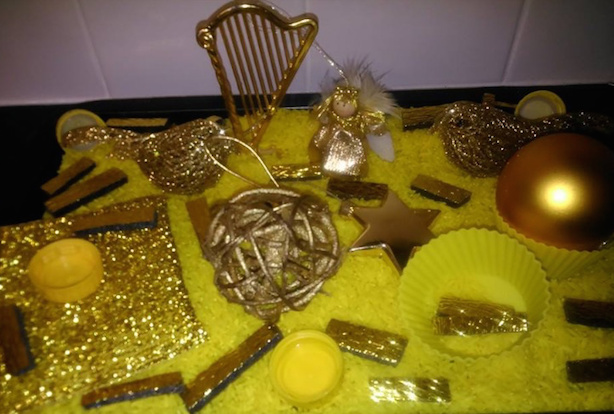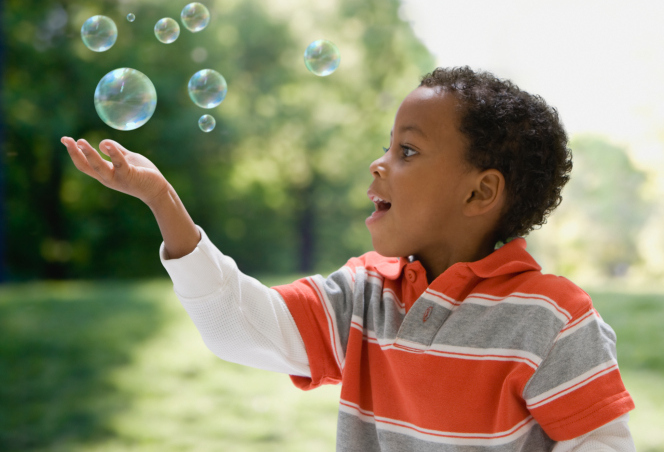How to Satisfy 6 Kinds of Sensory Needs for Kids With Autism
Editor's Note
We hope the products below help you or a loved one in your health journeys. Just so you know, The Mighty may collect a share of sales from the affiliate links on this page. As an Amazon associate, we earn from qualifying purchases.
When it comes to sensory seeking behavior and feedback, what helps my children on the autism spectrum might help yours, though maybe in different ways.
What are the different kinds of sensory seeking behaviors?
1. Oral: Anything that provides a mouth feel, like chewing, licking and biting.
To help redirect this, there are Chewys and chewlery available online. For children who only choose to chew on material, a clean washcloth or wristband will help.
2. Tactile: Your sense of touch. A child with autism who likes to seek out tactile sensory experiences may stroke and touch many different textures.
For autistic children who are tactile seeking, having a bag of items to feedback from is a good idea. Encourage them to touch a variety of textures. For example, your bag could contain a first-aid crinkly blanket (space blanket), bubble wrap, soft fleecy materials, pine cones, carpet square samples, astroturf samples, feathers, large seashells and smooth, cool stones to feel.
Some stretchy toys are great to fiddle with for tactile feedback, such as spongy toys and rough items like tree bark.
3. Olfactory: Your sense of smell, so lots of sniffing and seeking new, attractive smells.
Empty soap bottles are very good for olfactory sensory seekers on the autism spectrum. Simply wash out, dry and put in colorful pom-poms soaked in vanilla essence or lavender. An empty jar with a few holes in the lid stiffed with lavender is a good calming tool. Make sure they are closed good and tight; a glue gun is excellent for this.
4. Proprioception: Your sense of where you are in space, where your feet end and the floor begins.
Children on the autism spectrum who have proprioceptive seeking tendencies may stomp, tread heavily and sit down hard for the impact.
For children who are sensory seeking by bouncing, provide crash mats and trampolines for proprioceptive feedback.
5. Vestibular: A vestibular seeker will enjoy spinning and rocking, and they may enjoy swinging.
Spinning and rocking is seeking to balance the vestibular sense, so swinging your child gently in a hammock-shaped sheet is great for this, as are sit-on spinning toys.
6. Visual: The sense of sight. A visual seeker will enjoy looking at different lights and colors.
Sometimes children with autism enjoy tilting their heads to one side to watch car wheels spin, or squinting to change their visual perception.
Visual seekers will enjoy bubble tubes, fiber optic lamps, sand timers and light up toys that are visually stimulating. For more visual fun, try tinted lenses glasses and a bubble machine.
These are all things my children on the autism spectrum enjoy and I do hope they help yours. If your child is flooding the bathroom, playing in the toilet or tipping your shampoos out everywhere, they are sensory seeking. They are not misbehaving; instead, redirection is what’s called for.
Sensory play is easy and fun and needed for our children with sensory needs. It helps to ground and regulate them.
Some cheap, easy examples are:
- Water play, bubbles, foamy soap , bath paints and empty bottles for pouring.
- Rice, lentils, pasta and dried beans for pouring. Never use black beans or kidney beans, as they are toxic until cooked.
These are things that will help calm and stimulate your children and in turn keep your well-being intact. Above all, they are fun and children learn through what they experience in their environment.
Looking for more great toys for kids with disabilities? Try our Mighty gift guides:
- 16 Interactive Toys for Nonverbal Kids
- 31 Awesome Gifts for Kids With Sensory Issues
- Cool Gifts for Kids Who Don’t Like to Play With Toys
- 17 Educational Gifts for Kids With Disabilities
- 16 Books, Games and Toys for Kids That Feature People With Disabilities
- 12 Items You Can Use to Create a Sensory Room
- 9 Developmental Toys for Children With Disabilities
Getty image by Nanostock.



